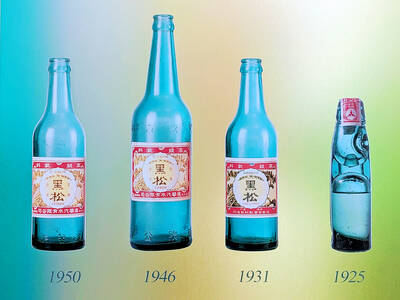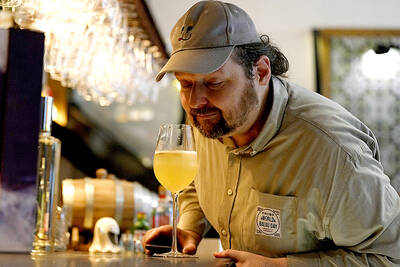VIEW THIS PAGE Taken
The latest action flick from French writer-producer Luc Besson is notable for enjoying sustained box office success in the US nearly two months after its release. Liam Neeson is a former US spook who comes to the rescue of his kidnapped daughter, now apparently bound for a Middle Eastern harem. Carnage follows in his wake as he puts paid to his mid-life crisis — as well as a white slavery network. Sensitive souls might find this one a little hard to watch in the next few weeks given the sad fate of Neeson’s real-life wife, Natasha Richardson.
Young@Heart
Genuinely emotion-filled release of the week is this British documentary from 2007 about a choir of senior citizens with an average age of about 80 and who specialize in modern, rock-oriented fare. It follows their rehearsals, a number of individual stories and the last-minute deaths of choir members before closing with energetic performances. Winner of several awards, this film has real heart and has left audiences teary and delighted at the same time.
Make It Happen
Poor reviews in Britain and Australia may have helped keep this formulaic aspirational teen dancer movie from a US release, but Taiwanese youngsters besotted with dancing might find something of interest, though even they might be disappointed at the number of dance sequences on show. Mary Elizabeth Winstead (Bruce Willis’ daughter in Die Hard 4.0) is a rural lass dreaming of entering a Chicago dance academy, but has to triumph the hard way, etc etc.
Stars on Earth
Bollywood identity Aamir Khan directs this drama from 2007 about a precocious but dyslexic and misunderstood child whose condition is recognized by a sympathetic teacher. Not many Bollywood features reach Taiwan, and this one is rather atypical, though its length (more than two-and-a-half hours) is not. Child actor Darsheel Safary has impressed many with his lively performance. Also known as Little Stars on Earth and Taare Zameen Par: Every Child is Special.
Homeless Boy
Based on a best-selling autobiography, Homeless Boy is the latest import to coincide thematically with the economic crisis. The boy is Hiroshi, whose already depleted family suffers a double blow when they are evicted and the father leaves the kids behind. Hiroshi follows suit and hits the streets, but, as the Japan Times observes, his fate is far kinder than most street people might experience, and casting an overaged pop star in the role hardly helps. This is no Vagabond or Pixote, then, but most of the kids who see this feel-good flick will probably be grateful for that.
Kamome Shokudo
In a treat for fans of Japanese cinema and the offbeat, the Spot theater in Taipei is screening the two most recent films from Japanese writer-director Naoko Ogigami. Kamome Shokudo (2006) follows the exploits of three Japanese women in Finland who end up working at the restaurant of the title. Quiet, subtle and charming, this film can be added to the list of fine features over the years that have seduced audiences by prominently featuring good food. Also known in English as Kamome Diner or Seagull Diner.
Megane
In Megane (2007), Ogigami sets the action much closer to home, though still rather remotely for most Japanese. Okinawa offers another space for older Japanese women to experience life as it isn’t lived back in the suburbs, and the results are equally quirky and slightly surreal. Their adaptation process and the eccentric locals in this case have hints of that underwatched British classic, Local Hero, and with a psychological payoff to match. English title: Glasses. VIEW THIS PAGE

The unexpected collapse of the recall campaigns is being viewed through many lenses, most of them skewed and self-absorbed. The international media unsurprisingly focuses on what they perceive as the message that Taiwanese voters were sending in the failure of the mass recall, especially to China, the US and to friendly Western nations. This made some sense prior to early last month. One of the main arguments used by recall campaigners for recalling Chinese Nationalist Party (KMT) lawmakers was that they were too pro-China, and by extension not to be trusted with defending the nation. Also by extension, that argument could be

Aug. 4 to Aug. 10 When Coca-Cola finally pushed its way into Taiwan’s market in 1968, it allegedly vowed to wipe out its major domestic rival Hey Song within five years. But Hey Song, which began as a manual operation in a family cow shed in 1925, had proven its resilience, surviving numerous setbacks — including the loss of autonomy and nearly all its assets due to the Japanese colonial government’s wartime economic policy. By the 1960s, Hey Song had risen to the top of Taiwan’s beverage industry. This success was driven not only by president Chang Wen-chi’s

Last week, on the heels of the recall election that turned out so badly for Taiwan, came the news that US President Donald Trump had blocked the transit of President William Lai (賴清德) through the US on his way to Latin America. A few days later the international media reported that in June a scheduled visit by Minister of National Defense Wellington Koo (顧立雄) for high level meetings was canceled by the US after China’s President Xi Jinping (習近平) asked Trump to curb US engagement with Taiwan during a June phone call. The cancellation of Lai’s transit was a gaudy

The centuries-old fiery Chinese spirit baijiu (白酒), long associated with business dinners, is being reshaped to appeal to younger generations as its makers adapt to changing times. Mostly distilled from sorghum, the clear but pungent liquor contains as much as 60 percent alcohol. It’s the usual choice for toasts of gan bei (乾杯), the Chinese expression for bottoms up, and raucous drinking games. “If you like to drink spirits and you’ve never had baijiu, it’s kind of like eating noodles but you’ve never had spaghetti,” said Jim Boyce, a Canadian writer and wine expert who founded World Baijiu Day a decade